#Les Misérables 1925
Text
Caught up on Les Mis Letters, and I have to issue a correction on my '25 commentary: I complained about Javert's drowsiness in the Corinthe, but this is out of the Brick, where we read in IV.XII.VII that "since entering the room [Javert] had fallen into a reflection of sorts and seemed no longer to notice anything going on around him". Toulout might be more sleepy than contemplative but the spirit is there.
What's going on with this, though? The qualifiers—"of sorts" "seemed"—pull weight, but I'm not going to take them as making the meaning contradict itself, so. A singularly unreflective character whose profession is noticing things takes a moment to do the opposite.
Well. From a practical perspective, Victor Hugo needs Javert to be stuck at this barricade, and Gavroche needs to notice him before the reverse, so the moment of inattention is useful to move the narrative where it needs to go.
Speaking from inside the story, though—it's curious. These reflections "of sorts" could be nothing deeper than taking stock of what he's learned thus far, deciding whether it's time to leave before it becomes difficult to slip away and report. Or, to throw together a theory I won't commit myself to: maybe this is a moment of disquiet. I don't believe he's got the capacity here to doubt Authority/his superiors/orders, but he very much can doubt himself, and he's far outside the bounds of honesty in his behavior—he has actively participated in building the barricade, these people have shown him enough trust to arm him and he's presumably said something in the course of those interactions that didn't come across suspicious. I don't think he's disquieted on the account of the revolutionaries (they're outside society and betraying their trust surely wouldn't occur to him as a moral failing), but his actions might unsettle his sense of himself as perfectly honest. When he smiles upon being confronted, is it with relief that he can discard a discomfiting cover?
I don't entirely buy it myself. That strays a little close to thinking, which canonically this guy doesn't do. But Javert's psyche is a rickety structure built on uneven ground, and it makes sense to me he would occasionally pause—maybe bewildered by his own pausing—as he forces his observations/feelings into conforming with his unreality.
14 notes
·
View notes
Video
undefined
tumblr
The introduction of Digne and the Bishop Myriel
Les Misérables (1925)
Actually filmed in Digne! (Or at least most of it was)
#les misérables#les miserables#les mis#les mis 1925#digne#myriel#les mis letters#since we're up to this point now
48 notes
·
View notes
Text

Costume design for Fantine by Henri Fescourt for Les Misérables (1925)
215 notes
·
View notes
Text
Which version of this do you prefer?
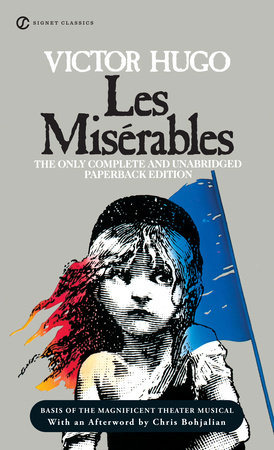

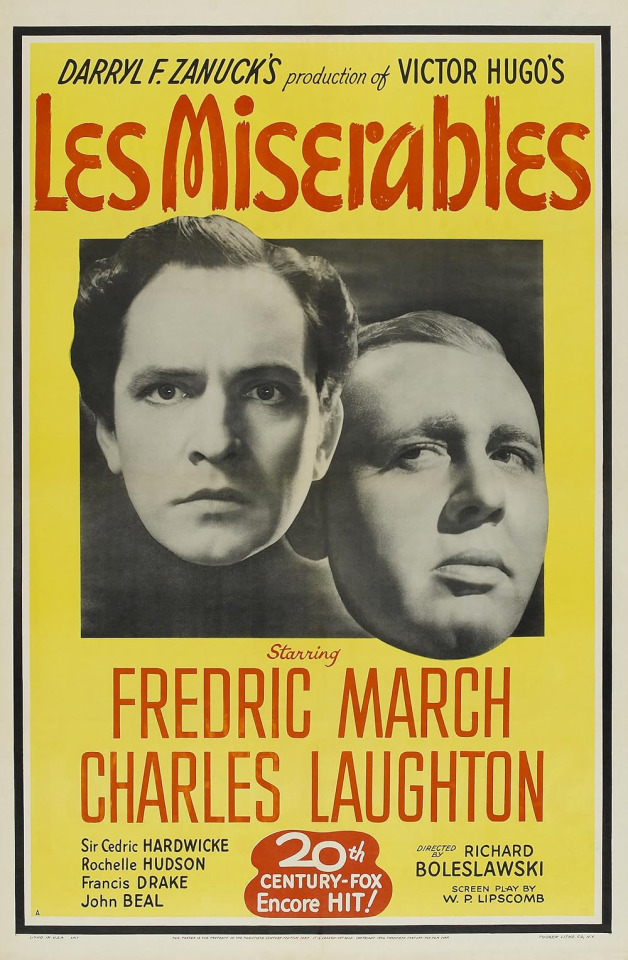

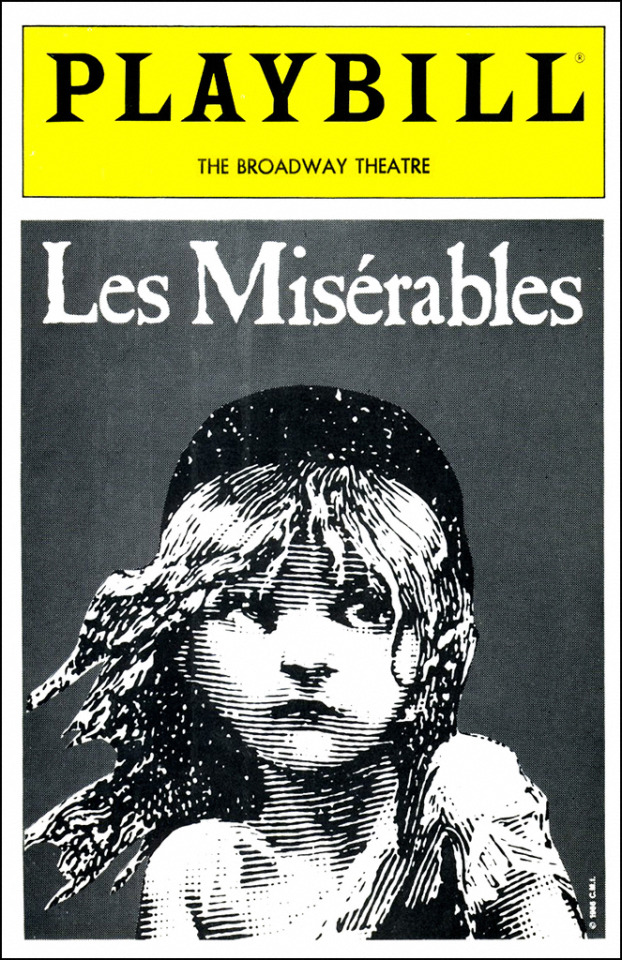



#polls#tumblr polls#adaptation polls#les mis#les miserables#victor hugo#les miserables book#les#les miserables 1998#les miserables 1925#les miserables 1935#les miserables musical#les mis musical#les miserables 1978#les mis 1978#les mis 1925#les mis 1935#les mis 1998#les mis 2012#les miserables 2012#les mis 2018#les miserables 2018#books#classical literature#musicals#theater#musical theater#movie musicals#films#tv shows
141 notes
·
View notes
Text




Javert and his Junior Inspectors / The Mute Pack of Hounds
in Les Misérables (1925, dir. Henri Fescourt)
#fc gifset tag#lm1925#javert#les miserables#MAKING GIFS OF THIS FILM IS SO HARD ...#those are his dogs. those are his minions. those are his squad :D#the anti-patron-minette!!!#i just wish there was more about them in the book... I am once again saying LM should be longer.
190 notes
·
View notes
Text















Les Misérables, illustrated by Mead Schaeffer, published by Dodd, Mead & Co. (1925)
58 notes
·
View notes
Text







LES MISÉRABLES (1925)
“Long live the Republic! I’m one of them.”
Grantaire had risen. The immense gleam of the whole combat which he had missed, and in which he had had no part, appeared in the brilliant glance of the transfigured drunken man.
He repeated:
“Long live the Republic!” crossed the room with a firm stride and placed himself in front of the guns beside Enjolras.
“Finish both of us at one blow,” said he.
And turning gently to Enjolras, he said to him:
“Do you permit it?”
Enjolras pressed his hand with a smile. This smile was not ended when the report resounded.
— Les Misérables by Victor Hugo
Volume V: Jean Valjean
Book I: The War Between Four Walls
XXIII: Orestes Fasting and Pylades Drunk
46 notes
·
View notes
Text


thinking about how people in new york were so enthusiastic about the release of les misérables (1925) on broadway that the police got involved…
(the headline is sorta clickbait lol the article itself doesn’t really suggest an actual riot.. it was just veryyyy busy and the theatre was running showings at 15% over capacity)
source: https://archive.org/details/universalweekly100movi_4/mode/2up
#les mis#les miserables#please read the wikipedia article for this adaptation i’ve been editing it all day lol
35 notes
·
View notes
Text

BarricadesCon Panel Descriptions: Highlights of Track 1, Saturday, July 13
Reflecting on Directing Les Mis by Pieces Of Cait
Cait directed an amateur production of Les Mis at the end of last year, and would love to talk about how that went and share snippets from the show and behind the scenes. This will include talking about adapting Les Mis for the space and budget, approaches to certain scenes, dual casting lead roles, and probably raving about the lovely cast.
2. What Horizon: Tragedies, Time Loops, and the Hopefulness of Les Amis by Percy
In this presentation, Percy will discuss the ideas of tragedy and hope with reference to Hugo’s original text and the ways in which rebellion has been changed in adaptation, as well as other works of inspiration for this staged play adaptation of Hugo’s work (namely Hadestown and Rosencrantz and Guildenstern are Dead). The presentation will detail choices made in the adaptation process, show clips from the staged reading, and touch on the different characters, setting, and overarching themes with which Percy engaged while creating the play.
3. Cosette: A Novel — The (Fanmade) Sequel to Les Misérables by Imiserabili
This presentation is a deep-dive into the 1995 fanfiction “Cosette” by Laura Kalpakian. It will include a short background on the author and the publication, a summary of the plot, an analysis of represented historical events in the work, character analyses and comparisons to the source material and other Les Mis adaptations, and memorable quotes.
4. Barricades as a Tactic: How Do They Work? by Lem
This session will explore the tactical and strategic uses of barricades, with an eye towards what to consider when writing both canon-era fanfiction and modern AUs. After all, the strategic goals towards which the barricades were used in canon-era urban warfare were often quite different from the strategic goals of similar-looking tactics in contemporary protest movements. Core components of the session will be a map-based analysis of July 1830, a comparison with June 1832 highlighting strategic goals and considerations canon-era characters would have, and an exploration of various parallels among contemporary protest tactics (which may or may not *look* like barricades).
5. Why is there a Roller Coaster in Les Mis? The Strange History of the Russian Mountains by Peyton Parker (Mellow)
In Les Miserables there is an actual canon scene where Fantine rides a roller coaster. How did a roller coaster end up in Paris in 1817? And why did this ride, one of the worlds first Roller Coasters, make a cameo in Les Mis? It’s “Les Mis Meets Defunctland.”
We’re going talk about the earliest origins of the Russian Mountains, the fascinating history behind how they came to France, their many connections to the political turmoil of the time period, what they felt like to ride, why they were shut down, how they fell into obscurity, and why Victor Hugo included them in Les Mis.
6. Obscure(-ish) Les Mis Adaptations To Watch by PureAnon
Les Mis has been adapted many times over the years, and this means there’s a lot of adaptations to enjoy. Because of this, a lot of adaptations are underviewed or underappreciated. This panel will discuss 1925, 1948, 1967, and 1995. These adaptations are all very different and are fascinating looks at how different countries and different time periods will adapt this story. Clips of each adaptation will be shown so the audience can get a taste of what each adaptation is like.
7. Recovery: A Fanfic Live Read by Eli (Thecandlesticksfromlesmis)
A full cast will live read a Les Mis fanfic written specifically for the con.
8. Preliminary Gaieties by Barri Cade, Percy, and Rare
In keeping with personal tradition, Rare, Percy, and ShitpostingFromTheBarricade will bring you a second year of our dramatic reading of the “Preliminary Gayeties” chapter of the brick, following specified drinking game rules (including classics such as “brick quotes that appear commonly in fanfiction,” “pretentious classical references,” and “drink/eat when characters drink/eat”), and enjoying snacks mentioned in the chapter as they are mentioned. Everyone is invited to participate by reading, eating, and drinking along with this activity!
#barricades con#barricadescon#les mis#les miserables#barricades#les mis con#victor hugo#lesmiscon#les mis fandom
18 notes
·
View notes
Text








Gabriel Gabrio as Jean Valjean
Les Misérables (1925) | dir. Henri Fescourt
#l832.gif#les miserables#les mis 1925#jean valjean#gabriel gabrio#silent film#french cinema#cinema gifs#les miserables 1925#i made some gifs ♥
26 notes
·
View notes
Text
Stayed up ’til 2AM finishing ’25 despite knowing today is full of air flight. Bless my own fool heart. Thoughts:
- I did not anticipate the barricade to go so hard. It’s bloody and frantic. The battle is more or less constant, the timeline compressed, which works fine. I find the gore makeup surprisingly effective, & props to all the actors playing dead who get stepped on during the action.
- A great number of women and folks in working men’s clothes throughout the crowds as the city riots—the movie is grasping something here that the novel doesn’t.
- Le Cabuc! The movie gives a disproportionate (I don’t mean this negatively) amount of time to this sequence and I think it’s worth asking why. Le Cabuc’s role is to illustrate corruption—the conflation of government with criminal—the demonstration of how official narratives are constructed to damage the image of revolution. His inclusion is sharply political, critical of government and police, and the emphasis here surprises me in the context of a film that eschewed Hugo’s preface and has overall gone soft on law-as-unjustice. It’s clever to use Éponine investigating the corpse to show his police identification and explicitly tie him for the viewer to his previous appearance as Claquesous. Less effective: when Enjolras shoots him he’s holding the firearm at a peculiar angle and it looks like Le Cabuc dies promptly of being shot in the foot.
- Éponine. Bless. Her death scene is so drawn out, she slumps and comes back, it’s a tragicomedy. Not a scene that translated well across the century. Still made me sad as hell, this Marius didn’t deserve her. Also, Nivette looks great in drag.
- boo, no martingale.
- yes, “Vous m'ennuyez. Tuez-moi plutôt.” Listen, I’m a Valjean/Javert guy, the inclusion of this line gave me joy, I can’t help myself. There are a few choices in Toulout’s performance throughout the barricade sequence that I feel ambivalent about (he wanders into the mostly empty Corinthe to have a brief nap, eyes fluttering shut as he props his chin on his fist, clearly contrary to the Brick, in which characters are almost never allowed to rest; he fights when caught—common adaptation choice, it makes more psychological sense even as it undercuts an aspect of the character, namely that Javert does *not* make sense), but overall an enjoyable apostrophe in among all the death. Gabrio’s “get going!” gesture after he frees Toulout cracks me up, I wish I could gif it.
- Are y’all Enjoltaire people satisfied with this rendition of “Orestes Fasting and Pylades Drunk”? There wasn’t much space to breathe life into their dynamic, but it hits the essential point (which is the permets-tu, yeah?).
- I take back my words about Thénardier as pitiable—or, maybe he still is, but in the sewers the menace becomes primary. Creepy fuck.
- When they emerge from the sewer, as Valjean takes a rest and after he checks for vital signs, he clasps his hand over Marius’—it’s an oddly gentle gesture, even sweet, and it forefronts the kindness Gabrio has imbued the role with. He telegraphed his hate of Marius earlier but maybe dragging a guy through the sewer puts a little tenderness in your heart, if only for a moment.
- Javert shows up, we get his “Qui êtes-vous?”—the movie has become very invested in cleaving to his book dialogue, curiously. He doesn’t clamp his baton in his teeth but he does get right up in Valjean’s dookie-smeared face (gross).
- The “Javert Derailed” sequence—really interesting choices throughout. There’s liberal use of intertitles to describe his inner state as he chews the scenery, more than is the film’s usual, including at least one that is arguably a restatement of what’s been acted out on screen and therefore works to particularly emphasize the point to the viewer (iirc it’s a slightly abridged “Il était forcé de reconnaître que la bonté existait. Ce forçat avait été bon. Et lui-même, chose inouïe, il venait d'être bon. Donc il se dépravait.”). He does not write a suicide note in this version even though there’s screen time enough for it, oddly. Also oddly (somewhat comedically) as he’s visibly having a breakdown in the police station a man sits at the back of the room and smokes a pipe, unmoving—a concrete representation of the system and its indifference to its even most loyal of agents, perhaps? Anyway, good job, ’25, you thoroughly derailed this poor fuck.
- The remainder of the film feels rushed, and I wonder if the creative team wished they didn’t have to play it out. If only they knew a half dozen future adaptations would call on the “too fucking sad” principle and cut off even before the wedding, eh? In a peculiar choice we spend some time looking at a book, not an intertitle, on which is written the passage excusing Cosette’s lack of attentiveness during Valjean’s decline, almost as if to say: listen, this is in the novel, we can’t help it. I’d quote but—working on phone, here. Valjean’s death makes me want to cry, I’m attached to Gabrio’s rendition of him, Milovanoff revives herself for a pitch-perfect take of Cosette’s sweet prattling attempt to speak him back to life. Fuck this story (I love it).
Overall? 9/10, an entertaining film with a solid cast, moments of brilliant acting, good choices where abridgment of the original material is concerned, attentiveness to the source without slavishness to it. Loses a point for failure to lean as heavily into the politics as Hugo does (also a bit more Catholic than the original—I forgive it). Normally I wouldn’t so entirely judge an adaptation for its relationship to the Brick (most of them deviate greatly enough that it’s kind of futile), but ’25 seems to have the primary intent of putting on screen what’s on the page, so I’ll meet it where it’s at.
12 notes
·
View notes
Photo








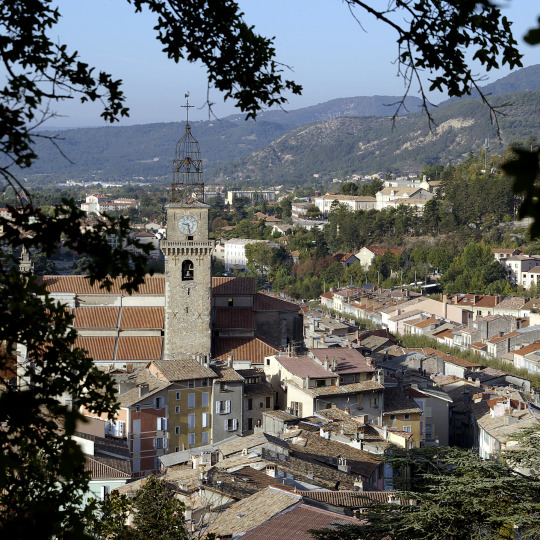
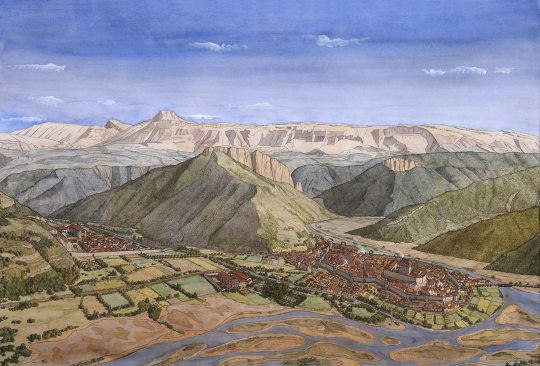
Digne in the era of Les Misérables
An engraved print of a scenic view of the city of Digne-les-Bains from a traveller's guide published in 1838
A coloured military map of Digne with the buildings marked from between 1820 and 1866
The old episcopal palace of Digne, a postcard from 1898 to 1900
An old photo of the old Place de l'Évêché
An early 20th century map of Digne, showing a lot more detail but way too new for our purposes, dated 1921
An old photograph of Digne
An old photograph of a sloping street with archways through buildings
A screenshot from Les Misérables 1925 showing another narrow sloping street surrounded by small houses
A view of the Cathedral St. Jérôme with its strange wire dome, photograph from 2007 by Denis Champollion
Digne in the late 14th / early 15th century, an artist's impression by Jean-Claude Golvin
Digne-les-Bains (or Dinha dei Banhs in the local Occitan language) is a small city in Province, in southeastern France. Centered on top of a hill, it’s surrounded by mountains on all sides and the river Bléone (Blèuna) flows past it (or nowadays rather through it as the city has spread on the other side of the river).
The 1925 movie adaptation of Les Misérables actually filmed the Digne scenes on location in Digne which is a great opportunity to see some authentic views of the city! (The movie is available in the Internet Archive.)

More under the cut:
Unfortunately I wasn’t able to find contemporary maps of Digne, except for this one from a Carte générale de la France (Cassini de Thury) that is luckily from exactly the right year (1815) but doesn’t really help much because it doesn’t really show much detail of the city and it’s also very difficult to read:
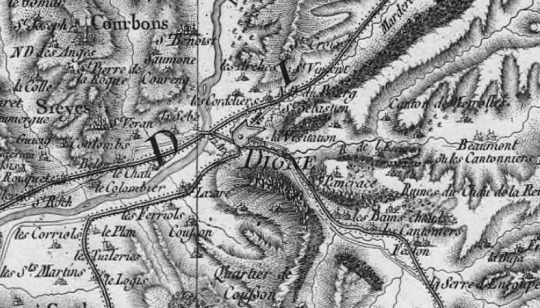
The Carte de l’état-major 1820-1866 is much more vague in terms of date, but I find it more useful:

I would be willing to guess that it’s probably still fairly close to Digne in 1815. Aside from the lack of walls, which I don’t think you can see on this map, but definitely would have been there in 1815. Hugo even mentions the walls:
He retraced his steps; the gates of Digne were closed. Digne, which had sustained sieges during the wars of religion, was still surrounded in 1815 by ancient walls flanked by square towers which have been demolished since.
I was also able to find a map from 1921, which is over a century later, but it’s the oldest proper map of the city I could track down: (Here zoomed in to focus on the old city)
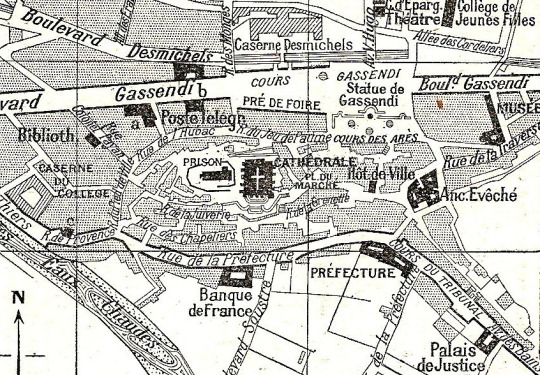
From something too recent to something much too old: an artist’s impression of medieval Digne, which actually shows the city walls:

There would have been more roads and streets and buildings outside of the walls in 1815, including the Boulevard Gassendi, which Hugo also mentions, as well as a bridge over the Bléone, but honestly it seems like the city actually hadn’t grown that much over the centuries.
It would grow over the course of the 19th century, though.
I’ll talk a little bit more later about the cathedral, the episcopal palace, etc. This post is getting too long!
Image Sources:
Digne-les-Bains official website (Jean-Claude Golvin)
Wikipedia / Wikimedia Commons (photographs by Denis Champollion, Szeder László)
Carte générale de la France (Cassini de Thury) from BNF Gallica
Guide pittoresque du voyageur en France (Eusèbe Girault de Saint-Fargeau) from BNF Gallica
Carte de l’état-major 1820-1866 from Géoportail (Institut national de l’information géographique et forestière)
Carte de la Provence (1921) : Digne (Les Guides bleus, Hachette, édition 1922)
Présentation de Digne-les-Bains from France Geo
dignois . fr / Digne-vieux
Les Misérables (1925)
111 notes
·
View notes
Text
So I just found this article rating the top 10 Les Mis Films. I'd like to know why the 1925 silent film isn't mentioned here. Because it's absolutely amazing and even though it's silent it captures all the emotion and spirit of the story. So if they can include the most recent BBC 4 part tv mini series of Les Mis the can include the 1925 version and I which imho out of the versions I have seen is so far on my personal list, the best by a million miles and that's coming from someone who isn't a fan of silent movies, but honestly I absolutely loved it most certainly highly recommend it to anyone who hasn't seen it. I watched it on archive.org if anyone is wondering. But to not give it the attention it truly deserves even if the reason is simply due to the fact that its an almost century old silent movie, is quite frankly a massive cop out. You don't know what you're missing if you haven't watched it or haven't been interested in watching it.

On archive.org its separated into 4 parts because its several hours long in its entirity. But it really is wonderful and Jean Toulout is absolutely chef's kiss as Javert and he is my 2nd all time favourite Javert including those guys from the stage musical, with Quastvert being my No1 and Norm Lewis my No3.
If you haven't seen it get it watched, it's a treat. I recommend watching it over 2 - 4 nights because watching it all in one go might be a bit much especially if you have work and stuff going on.
#les miserables#les mis#the best les mis film adaptations#articles & interviews#10 best les mis films#why is the 1925 adaptation not included in this list#les mis 1925 is the best
5 notes
·
View notes
Text


LES MISÉRABLES | 1925
31 notes
·
View notes
Text



Jean Toulout as Inspector Javert
experiencing the symptoms of a mental illness
in part 4 of Les Misérables (1925, dir. Henri Fescourt)
#Javert#inspector javert#les miserables#fc gifset tag#Im1925#dude I love love love the physical acting in these movies so much#dude we have got to bring silent movies back#jean toulout you will always be famous. TO MEEEEEEEEE
56 notes
·
View notes
Text
The International Distribution of Henri Fescourt’s Les Misérables:
Universal Pictures, the Carl Laemmle-Victor Hugo Scholarship, and a surprise appearance by William Hays
Sometimes it happens that two movie versions of Les Miserables are made and released at the same time. It happened first in 1909, when both the Edison Manufacturing Company and the Vitagraph Company of America released versions. It happened again in the 30s, when Raymond Bernard released a version in France, at the same time that Richard Boleslawski made his version in America. And apparently it had almost happened in the 1920s.
In 1925, Henri Fescourt released his version of Les Miserables. The movie is notable for being in four parts and close to six hours long. Meanwhile in America, Universal Pictures founder Carl Laemmle was apparently thinking of doing the same thing. In 1923 he had huge success with an adaptation of Notre Dame de Paris, starring Lon Chaney. "Some months ago I had in mind making into a photoplay, Hugo's great classic, Les Miserables,” Laemmle said. “When I learned that the Societé des Cineromans were already engaged in the production of this work, I investigated and found to my great satisfaction that it was being done most admirably. Having in mind our mutual desire to share the better of European productions with our American patronage, I arranged to distribute the picture in England and America.” (the Universal Weekly, 11 December 1926)
At the Regent Theatre in Portsmouth, England Fescourt's Les Miserables was recut and shown in two parts: “The Soul of Humanity” and “The Barricades.” It was reportedly very successful: 18,000 and 19,000 people were said to have seen the first and second parts, respectively. And that’s despite 80-degree weather and competition from a carnival, a regatta, and the start of the football season. People were apparently lining up 2 and a half hours before the show in order to get in. At the Rialto Theatre in London, 14,200 people came to see it in its first week. (the Universal Weekly, 2 October 1926).
In the US, the movie was initially shown in three theaters: to the Associated Advertising Clubs of the World at the Forrest Theatre, in Philadelphia, to the National Press Club at the Poli's Theatre in Washington and finally at Carnegie Hall in New York City. Some sources say that the film was shown in full (18 reels), some say that it was cut (to 14 reels). The Philadelphia and Washington showings were attended by the French ambassador. (The Moving Picture World, 10 July 1926). In attendance at the Washington showing were First Lady Grace Coolidge, Herbert Hoover (then Secretary of Commerce) and MANY other people whose names you can find here.
However the showing I would most like to have attended was the one at Carnegie Hall, which was presented with a special pre-show portion: an actor portraying Victor Hugo appeared on the stage, and then pretended to fall asleep, at which point actors dressed as characters from Les Miserables emerged from a giant copy of the book. “The Hugo speech and the resurrection of his characters were part of the Universal presentation given Les Miserables by James V. Bryson and Joe Weil,” reported the Moving Picture World. “The idea was taken from the original prologue in the picture itself and made an effective opening for this really fine production.”
For the film's wider release, Laemmle proposed to conduct a survey to see how people would prefer to see it: in its entirety or in an abridged form. Apparently he distributed a questionnaire via the Saturday Evening Post, Liberty, and Photoplay Magazine. Overwhelmingly people reported that they would like to see the movie unabridged, and that they would be willing to go to the theater multiple times to see the multiple installments. Wagner's Ring Cycle was cited as an example of a story successfully told in parts.
People felt very strongly about wanting to see the entire thing. As one journalist, who had seen the screening in Philadelphia put it: “It would be, it seems to us, a pity to subject this picture to the sort of ruthless cutting that would be necessary to bring it down to the length of a single feature. Great length usually consists of unnecessary padding, in a large measure, but not in this instance.” (the Motion Picture News, 10 July, 1926)
In the Universal Weekly (a trade publication for theater owners) one ad reads:
Thousands gave the overwhelming answer [to the question of whether it should be cut]:
“DON’T touch Victor Hugo; don’t rob us of a single scene of pathos, beauty, or magnificence; give us the immortal Jean Valjean as he lived, suffered, loved, and triumphed.”
So “Les Miserables” will come to you in two distinct stories, for showing on successive days, or weeks, as you see fit. First, “The Soul of Humanity;” second, “The Barricades.”
Each picture so big it ranks as a screen achievement; together — Victor Hugo as Victor Hugo would want to see his work on the screen.
A radical step! Yes — and it is the RADICAL that is SHOWMANSHIP!” (the Universal Weekly, 2 October 1926)
However despite this declaration that the film should and would be seen in full, Universal ultimately decided to release an 11 reel cut. As the Moving Picture World reported: “At first the two-part proposition was voted so strongly that Mr. Laemmle was on the point of ordering the print cut that way and a campaign looking toward this distribution of the picture started. But later advisors won the day. He reconsidered at the last moment. The picture has been cut to eleven reels and Carl Laemmle now announces that it will be distributed to theatres next season as a single super-special.”
But Laemmle wasn’t done. He had plans for another way of exciting the public’s attention: the Carl Laemmle-Victor Hugo Scholarship. It seems that originally Laemmle had intended the contest to be for college students, as he had purportedly reached out to over 700 universities to ask if they would participate. But ultimately it was decided that the contest would be open to high school students in the United States and Canada, with prize money intended to be used in furthering their education. A similar contest was to be held in the UK, where prize money could be used for university or an apprenticeship.
Students were invited to submit a 500 word essay answering the question: "What ideals for life do you find in 'Les Miserables?'" To prove that the author was in high school, the essay needed to be accompanied by a letter from their school principal.
A reporter for Universal Weekly opined: “The choice of this subject is regarded as a happy one in that it gives a present day aspect to the characters and motivations of Hugo's romance. It is said to be excellent also for its scope, and not of such a nature as to hamper students from certain sections of the country or from certain walks of life.”

Ad in the Saturday Evening Post.
For the US & Canada contest, it was announced that there would be ten $500 scholarships and one $1000 grand prize, for a total of $6,000 in scholarships (that’s over $100,000 today). The number of scholarships available was increased when Jean Sapene, of the Society of Cineromans also made a contribution of $3,000 (The New York Times, 14 Aug 1927.)
According to Laemmle, the contest was not “any form of blatant advertising” (source) and yet…it was definitely an advertisement. Though technically entrants didn’t need to see the movie to submit an essay, the contest was great advertising for the movie and additionally, it elevated the profile of the movie by branding it as educational, salutary even, not simply entertaining. In “City of Dreams: The Making and Remaking of Universal Pictures,” Bernard F. Dick writes that Laemmle wanted to be known as “a defender of the values derived from a liberal arts educations” but that “those values did not exist in the abstract; they had to be present in a film Universal was releasing. [In creating the scholarship] Carl was not especially interested in Victor Hugo’s novel Les Miserables but in Henri Fescourt’s 1925 film version that Universal was releasing.”
“Much thought and discussion with my associates convinced me that an admirable way to [increase the general appreciation for Victor Hugo’s creative genius] would be through a student’s essay competition,” stated Laemmle. “This would entertain on the part of the entrants something more than a casual reading of the book and impress them with the value of character as exemplified by the life of the novel’s hero" (Niagara Falls Gazette, 18 October 1927.)
The scholarships would be awarded by Dr. John J. Tigert, United States Commissioner of Education; Dr. Ernst Crandall, Director of Visual Education of New York City; Dr. Thomas Finnigan, Chairman of Visual Education of the National Education Association; and Octavus Roy Cohen, an author of “ethnic comedies” (and yes that's as bad as it sounds.) The head of the awards committee was Dr. Nicholas Murray Butler, president of Columbia University (Butler would later win the Nobel peace prize but is remembered today for his notable silence in the face of the growing Nazi movement). The letter from Butler accepting the role of judge was published. Here is an excerpt:
My friend, Mr. Will Hays, has sent me your letter to him of November 9th with its kind suggestion that I should act as one of the judges in the interesting and highly useful competition that you propose for high school students. I have written Mr. Hays that it will give me great pleasure to accept your suggestion and to serve your cause to the best of my ability.
If you didn’t catch that, that’s William Hays, who the Hays code is named after.... So while I most strongly associate the 1935 American film version of Les Misérables with the movement to sanitize films and remarket them as educational, we can see that Hays and others were laying the ground work for that with this 1927 release, the scholarship contest, and an advertising campaign that sought to involve educators and students.
In cities across the United States, special screenings were held for students and teachers, sometimes at a reduced price, supposedly due to the educational merits of the film (and definitely not in an attempt to sell tickets). Libraries and bookstores handed out hundreds of thousands of bookmarks (designed by the Cleveland Public Library) advertising the film, in addition to entry forms for the contest. In Charleston, South Carolina the high school superintendent wrote an article in the newspaper about the movie. (The Motion Picture News 28 January 1928). In Buffalo, New York school officials endorsed the movie and the superintendent distributed information about the scholarship. (The Motion Picture News 25 November 1927). In Boston the premiere was attended by the Governor, as well as 18 school superintendents (Motion Picture News, 18 November 1927). And in Houston, Texas students in the French and literature classes were given extra credit if they attended the movie (Moving Picture World, 31 December 1927).
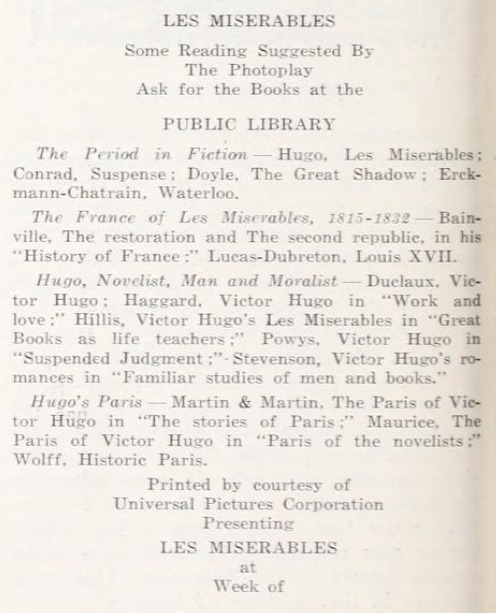
The bookmark in question (Moving Picture World, 24 December 1927.)
So who won the contest? One of the $500 prizes was awarded to Alfred Hollander, a student of Emmerich Manual Training high school in Indianapolis, Indiana. He came in 5th place.
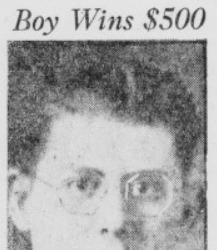
(The Indianapolis Times, 23 April 1929)
And the first place winner was 14 year old Edwin M. Snell, a student at Central High School in Grand Rapids, Michigan.
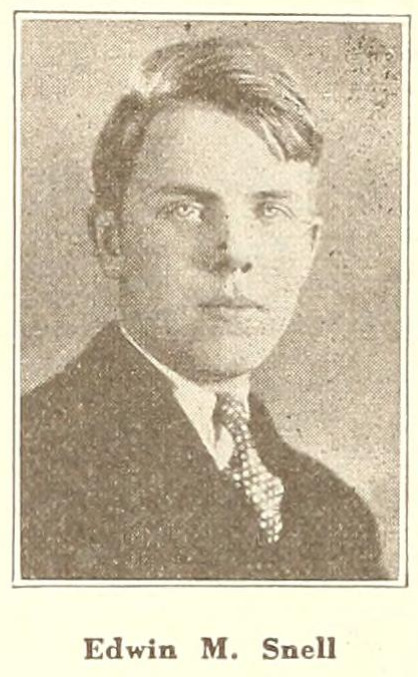
(Exhibitors Herald World, 11 May 1929)
But the real winner was Universal Pictures, which surely made buckets of money. And that’s all I have to say on the subject for now, except for to thank @mabeuf5 and @l832 for reigniting my interest in this topic and that I’m sure we will be hearing more about this from the two of you soon.
#les miserables#lm 1925#lm in education#lm in america#sorry this post is so long#all mistakes are mine and mine alone
17 notes
·
View notes